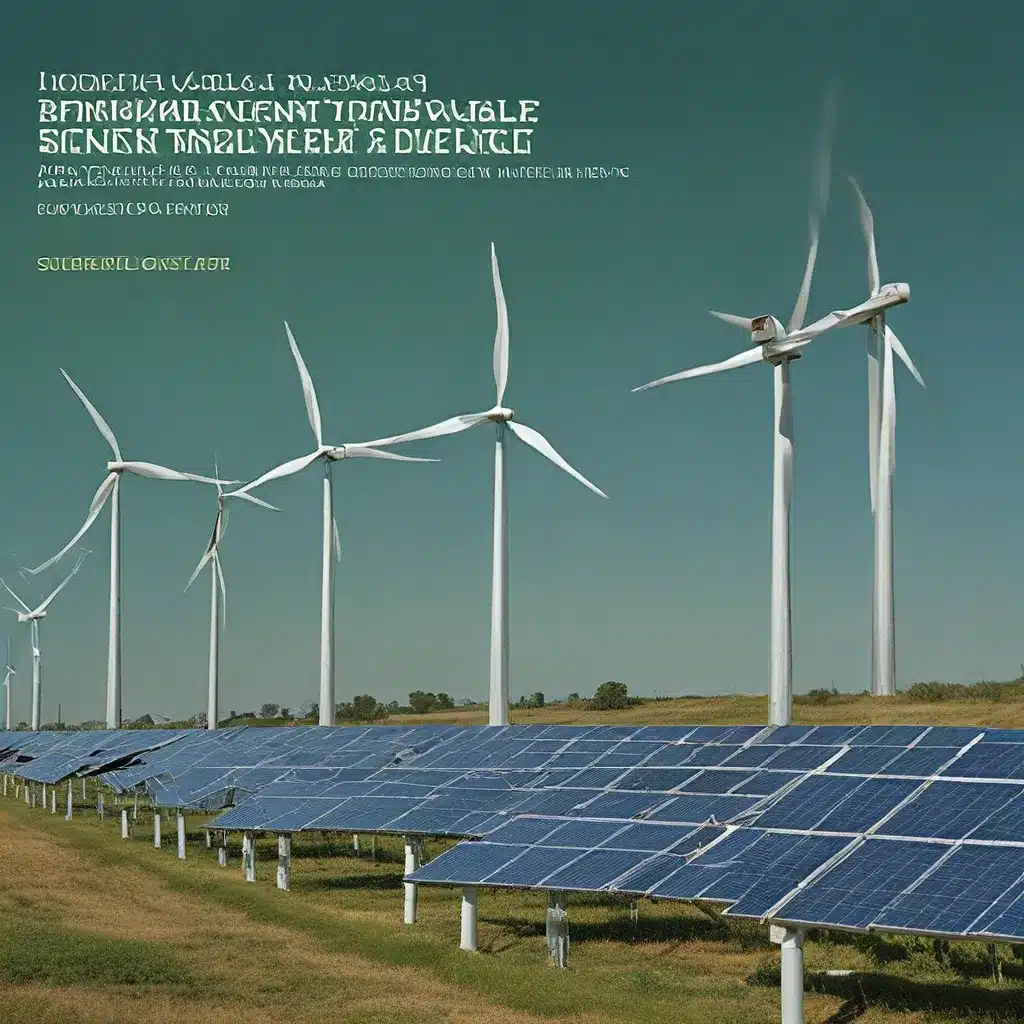
As an avid science enthusiast and sustainability advocate, I’ve always been fascinated by the intersection of renewable energy and material science. The potential to harness clean, sustainable power while minimizing environmental impact is a holy grail of modern innovation. And let me tell you, the progress being made in this field is nothing short of remarkable.
Powering the Future with Clean Energy
One of the most exciting developments in renewable energy is the rapid advancements in solar photovoltaic (PV) technology. We’ve all seen the iconic solar panels popping up on rooftops and in sprawling solar farms, but the real magic happens behind the scenes. Material scientists have been working tirelessly to improve the efficiency, durability, and affordability of these solar cells.
Just recently, I read about a new type of perovskite solar cell that can convert sunlight into electricity with an astounding 29% efficiency. That’s nearly as efficient as the best silicon-based solar panels, and the best part? They can be produced using low-cost, eco-friendly materials. Imagine the impact if we could blanket our rooftops and deserts with these high-performance, sustainable solar cells. It’s a game-changer for the renewable energy revolution.
But solar power is just the tip of the iceberg. Wind turbines are another shining example of how material science is driving the clean energy transition. The massive blades that harness the power of the wind are marvels of engineering, crafted from advanced composite materials like carbon fiber and fiberglass. These materials not only make the blades incredibly strong and lightweight, but they also allow for sleeker, more aerodynamic designs that maximize energy capture.
And let’s not forget about the role of renewable energy solutions providers like Firewinder, who are working tirelessly to bring these cutting-edge technologies to communities around the world. Their innovative approaches to solar, wind, and energy storage are helping to make clean energy accessible and affordable for all.
Sustainable Materials for a Greener Future
While renewable energy is revolutionizing the way we power our world, the impact of material science goes far beyond just energy generation. Researchers and innovators are also tackling the challenge of creating more sustainable materials for a wide range of applications.
Take the issue of plastic waste, for example. It’s a global scourge that’s choking our oceans and filling up landfills. But material scientists are fighting back with the development of biodegradable and compostable plastics. These eco-friendly alternatives are made from renewable, plant-based materials that can break down naturally without leaving behind harmful microplastics.
I’m particularly excited about the work being done on biobased and recycled materials for construction. Imagine buildings constructed with hempcrete, a lightweight, insulating material made from the woody core of the hemp plant. Or what about cross-laminated timber, which uses engineered wood panels to create sturdy, carbon-sequestering structures? These innovative materials not only reduce the environmental impact of construction, but they also have the potential to revolutionize the way we design and build our cities.
And let’s not forget about the circular economy – the idea of keeping resources in use for as long as possible, extracting the maximum value from them, and then recovering and regenerating products and materials at the end of their service life. Material scientists are at the forefront of this movement, developing advanced recycling technologies and new ways to repurpose waste into valuable raw materials.
Fostering a Culture of Sustainability in Research
As excited as I am about the technological advancements in renewable energy and sustainable materials, I’m equally inspired by the cultural shift happening within the research community. Funders, researchers, and grassroots initiatives are all coming together to drive a more sustainable transformation in science.
I recently had the opportunity to attend an event organized by environmentally sustainable research funders, and it was incredible to see the level of commitment and collaboration. These organizations are recognizing the urgent call for action from the Intergovernmental Panel on Climate Change (IPCC) and are dedicated to supporting research projects that prioritize environmental sustainability.
One of the speakers, Martin Farley, the Associate Director of Environmental Sustainability Programmes at UKRI, shared some fascinating insights. He explained how labs can be incredibly resource-intensive, consuming up to 10 times more energy and 100 times more water than households. The environmental impact is staggering, with labs generating substantial hazardous and non-hazardous waste.
But the good news is that the research community is taking action. The University of Cambridge’s Head of Environmental Sustainability, Sarah Carden, mentioned that they’re working on a report to share actionable tips and evidence-based sustainability practices that can be implemented in lab settings. And across the globe, researchers, tool developers, and grassroots initiatives are all committed to driving this sustainable transformation in science.
The Road Ahead: Challenges and Opportunities
As exciting as these advancements are, I know that the journey towards a more sustainable future is not without its challenges. Material science and renewable energy research are complex and rapidly evolving fields, and there’s still a lot we have yet to discover.
For example, the long-term reliability and durability of some sustainable materials is still an area of active research and debate. And while perovskite solar cells have shown incredible efficiency, there are still questions around their stability and scalability for large-scale deployment.
But I’m not deterred. I see these challenges as opportunities for further innovation and progress. By embracing a spirit of curiosity and collaboration, I believe we can overcome these obstacles and continue to push the boundaries of what’s possible.
After all, the stakes are high. The IPCC has made it clear – we need urgent action to address the climate crisis. And I truly believe that the advancements in renewable energy and sustainable materials are crucial pieces of the puzzle. Together, we can build a greener, more sustainable world for generations to come.
So, let’s keep exploring, experimenting, and dreaming big. Who knows what incredible breakthroughs are just around the corner? I, for one, can’t wait to see what the future holds.

